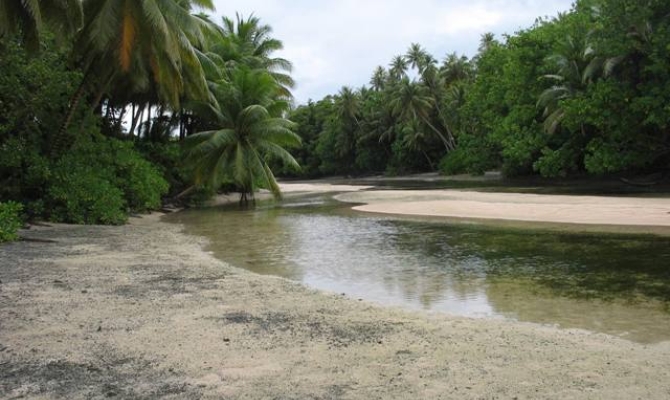
Island and Ocean Ecosystems

24 January, 2013 - The Marshall Islands are starting 2013 by growing seedlings of hope in a mangrove rehabilitation and replanting project.
Namdrik and Jaluit Atoll, two wetland sites of international importance, will be hosting the project to increase community resilience to the impacts of climate change through restoring their existing degraded mangroves.
“We are also hoping that through this project people will understand the value of mangrove conservation, that they are an important climate change adaptation measure and can act as coastal buffers and help strengthen food security,” said Mr. Vainuupo Jungblut, the Oceania Ramsar Officer at the Secretariat of the Pacific Regional Environment Programme (SPREP).
The mangroves will help protect crops, gardens and communities from salt spray, storm surges and extreme events thereby increasing community resilience to climate change and sea level rise.
It is expected that the project will also improve protection of shore and coastlines and by provide a buffer against strong wind and waves, thus decreasing the island’s vulnerability to high tides and flooding events.
The Ramsar Convention on Wetlands, signed by 18 countries in the city of Ramsar, Iran in 1971, is an intergovernmental treaty for national action and international cooperation for the conservation and wise use of wetlands and their resources. There are now 163 contracting parties to this convention which include Fiji, Palau, Papua New Guinea, Samoa and the Marshall Islands.
“Each year World Wetlands Day is celebrated on 2 February and in the Marshall Islands this year the celebrations will highlight 2013 as their year of “Mangroves as an adaptation measure”, catalyzing awareness activities for schools and the general public on these atolls. We’re really excited about the possibilities that this project brings.”
Jaluit Atoll is a large coral atoll comprising 91 islands with a land area of 700 hectares enclosing a large lagoon and a considerable range of healthy marine species populations of fish, as well as turtle nesting beaches and seabird roosting sites.
Namdrik Atoll consists of two islands with a land area of 277 hectares and supports populations of endangered marine species such as the hawksbill Turtle (Eretmochelys imbricata), Green Turtle (Chelonia mydas) and Humphead Wrasse (Cheilinus undulatus) and some endemic species.
The Mangrove Rehabilitation and Replanting Project on Namdrik and Jaluit Atoll in the Marshall Islands is funded by the Government of Australia through its International Climate Change Adaptation Initiative (ICCAI).
Namdrik Atoll consists of two islands with a land area of 277 hectares and supports populations of endangered marine species such as the hawksbill Turtle (Eretmochelys imbricata), Green Turtle (Chelonia mydas) and Humphead Wrasse (Cheilinus undulatus) and some endemic species.
The Mangrove Rehabilitation and Replanting Project on Namdrik and Jaluit Atoll in the Marshall Islands is funded by the Government of Australia through its International Climate Change Adaptation Initiative (ICCAI).
For more information please contact Vainuupo Jungblut - [email protected]
Image: Namdrik Atoll, Marshall Islands
Image: Namdrik Atoll, Marshall Islands